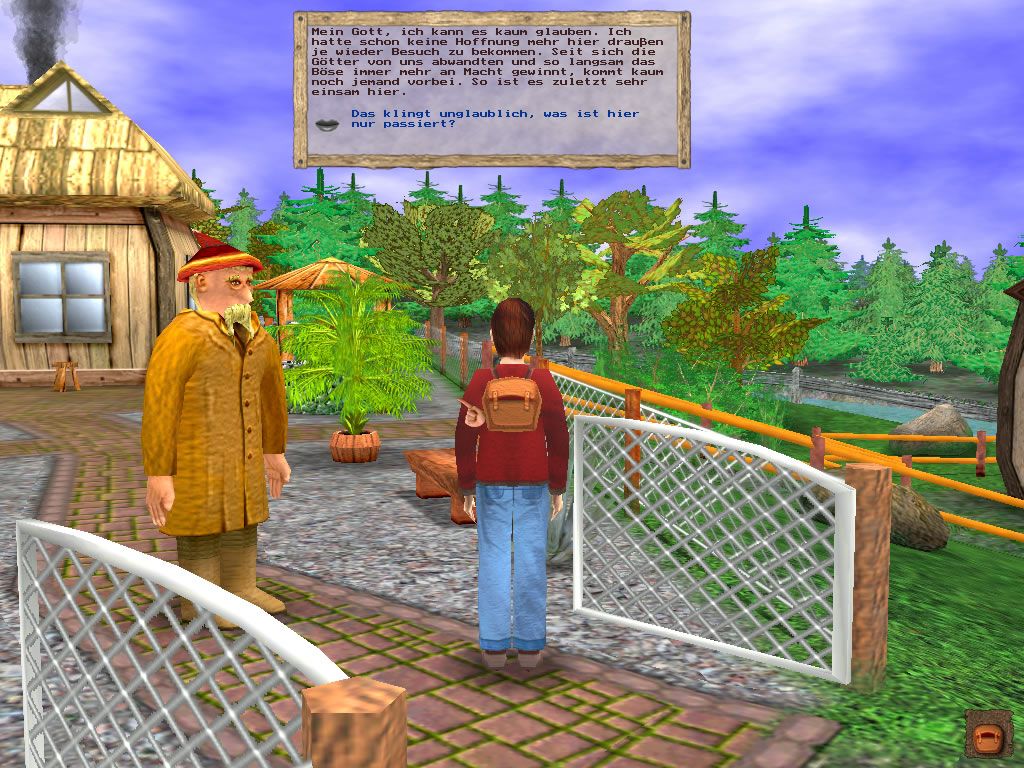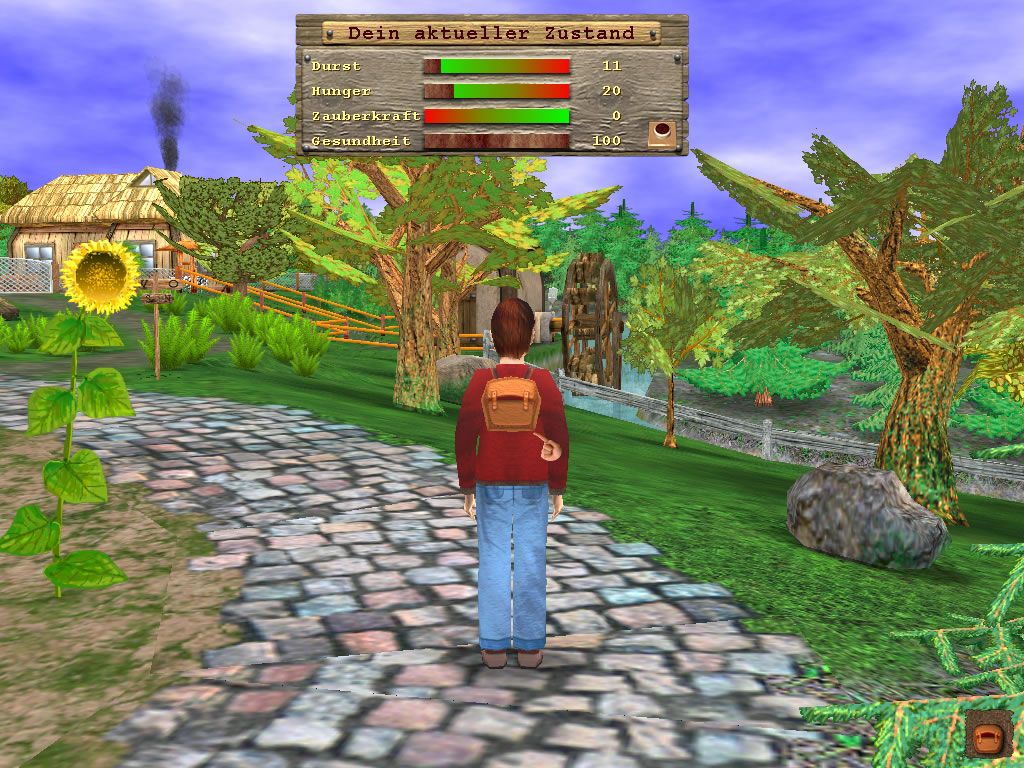Retro Replay Review
Gameplay
Hostradamus offers a blend of exploration, puzzle‐solving, and strategic resource management. Players guide the titular hero with the keyboard while the camera remains fixed behind his back, creating a focused viewpoint that emphasizes surroundings and obstacles. Interaction with objects and characters is handled via the mouse, allowing you to pick up key items, inspect environmental clues, and engage in multiple‐choice dialogues that can influence minor story details or unlock new puzzle paths.
(HEY YOU!! We hope you enjoy! We try not to run ads. So basically, this is a very expensive hobby running this site. Please consider joining us for updates, forums, and more. Network w/ us to make some cash or friends while retro gaming, and you can win some free retro games for posting. Okay, carry on 👍)
Central to the gameplay is a dynamic health system tied to Hostradamus’s hunger and thirst meters. As these values climb, your health begins to suffer; conversely, keeping hunger and thirst below a certain threshold gradually restores health. Potions and found food items become valuable commodities, forcing you to plan your expeditions carefully. This balancing act injects tension into even the simplest journeys through forests, caverns, and abandoned villages.
Your journey is not a solitary one: you’ll befriend magical bunnies who share your resource meters and require regular feeding and hydration. Goblin ambushes threaten both you and your companions, making timely healing and defense crucial. With three distinct modes—Action, Logic, and Normal—Hostradamus adapts to different playstyles, whether you prefer a fast‐paced health scramble, intricate brain‐teasers, or a balanced mix of both.
Graphics
Visually, Hostradamus embraces a stylized, slightly cartoonish aesthetic that lends charm to its world. Character models are simple yet expressive, with Hostradamus’s celestial heritage hinted at through subtle glowing effects around his armor and staff. Goblins, bunnies, and environmental set pieces are rendered in a palette of earthy tones and bright highlights, creating memorable silhouettes against rolling hills and cavern walls.
The fixed‐behind‐the‐back camera angle feels like a design choice to keep you immersed in Hostradamus’s journey, but it can obscure details in tight spaces or during puzzle sequences. Lighting is moody and atmospheric—torches cast warm glows in dungeons, while open fields are bathed in sunlit hues. Occasional texture pop-ins may occur on lower‐end hardware, but they rarely detract from the overall experience.
User interface elements, such as the hunger, thirst, and health bars, are unobtrusive yet clear, positioned at screen edges so you can monitor Hostradamus and his companions without breaking immersion. Inventory screens are straightforward, letting you combine items or apply potions in just a few clicks. While not a graphical showcase, the game’s visuals consistently support gameplay and storytelling.
Story
In Hostradamus: Hoffnung einer verlorenen Welt, you step into the shoes of a demigod born of a human mother and divine father. Tasked with rescuing humanity from an upsurge of malevolent goblins, you roam a fractured landscape performing good deeds, solving problems, and restoring hope to oppressed villagers. The setup is straightforward, but its mythical underpinnings give each quest a sense of purpose.
Narrative progression hinges on object‐based puzzles scattered throughout the world, each tied thematically to local crises—blocked trade routes, diseased farmlands, or kidnapped allies. Multiple‐choice dialogue options allow you to show compassion or pragmatism, though the impact on the overarching plot remains subtle. This approach keeps the focus on exploration rather than branching storylines, ensuring that every player experiences the same core tale of redemption and bravery.
Allied bunnies add a touching subplot: cared for by Hostradamus, these creatures become loyal companions whose well‐being you must safeguard. Their plight underscores the broader theme of nurturing both body and spirit. While the dialogue can be light on nuance, it consistently reinforces Hostradamus’s role as a guardian figure, making each rescued village and healed companion feel genuinely rewarding.
Overall Experience
Hostradamus strikes a unique balance between action and intellect. The health management mechanic introduces stakes to exploration, turning simple fetch quests into tense resource runs. Puzzles are varied in complexity, and the three difficulty modes let you tailor the experience—Action for a hectic challenge, Logic for deep puzzles, and Normal for a well‐rounded adventure. This flexibility broadens its appeal to both puzzle enthusiasts and casual gamers seeking moderate strategic depth.
Repetitive goblin skirmishes can sometimes feel like routine health drains, and the fixed camera may occasionally hamper spatial awareness. Yet, these minor drawbacks are offset by a world brimming with character and a steady drip of mystical revelations. The bunny companions, in particular, elevate what could be a standard demigod tale into something more heartfelt.
For players seeking a thoughtful adventure that marries light RPG elements with brain‐teasing puzzles and resource juggling, Hostradamus: Hoffnung einer verlorenen Welt offers a memorable journey. While it doesn’t reinvent genre conventions, its blend of mythic storytelling, health‐centric mechanics, and charming visuals make it a compelling choice for anyone intrigued by a demigod’s quest to bring hope back to a lost world.
 Retro Replay Retro Replay gaming reviews, news, emulation, geek stuff and more!
Retro Replay Retro Replay gaming reviews, news, emulation, geek stuff and more!








Reviews
There are no reviews yet.